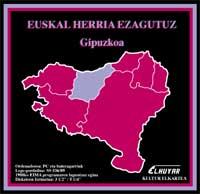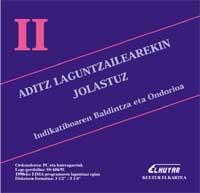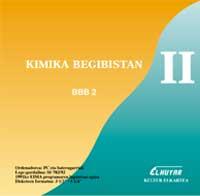Computer Science and Basque in Elhuyar
My colleagues in the magazine have asked me to talk about the importance it has had and has computer science in our group. The aim of this article is to explain when the trajectory of the IT section of Elhuyar began and the steps it has taken afterwards. And I say that I will leave many anecdotes and events forgotten between lines, because I know perfectly, for example, I will not be able to quote here the names of all those who have participated in the group, not even the way to thank their work. In advance, sorry! And after all this, let's start the work they have put on us, without turning around.
A little history

In the 1970s, coinciding with the beginning of the fourth generation of computers, computers jumped from large companies and universities to small businesses, offices, schools and houses; by the 1980s, personal computers were quite widespread. Thus, we begin to prepare ourselves for the new situation. Since one of the objectives of the Elhuyar Cultural Association was (and is) to create didactic material, it was considered essential to create programs that fed those computers that were in schools. In this way, although it seems simple, the challenge was to unite two totally different worlds: on the one hand, the pedagogical and didactic vision of the teachers and, on the other, the technical vision of the computer. This time taught us that we had to build bridges and, without delay, we began to do so.
Of course, it was not an easy task. This combination also meant overcoming certain problems or fears; the beginning of the application of new techniques generates many concerns and in this case it was also so. In an important group of professors arose the fear that computers would be their substitute. However, with the passage of time and as the products are published, it became clear that the teacher was irreplaceable and that these computer programs should be used as auxiliary material, since that was, in short, its objective.
First steps First steps
Around 1985 we started working on computer integration programs in teaching. The first were materials to work on curricular topics, such as mathematics, physics, geography, language, etc. Our work was mainly that of the programmers, leaving the content and design of the materials in the hands of the teachers; if any computer application requires to take into account the user, being clear that the users were students, this aspect has had a great importance.

It was a question of using the resources offered by computer science at that time so that utilities, interactive ones (which offered some conversation between the student and the program) were nice and attractive. In the technical aspect there were also certain limitations: configuration of computers in schools, small RAM, many black-white monitors, 5 1/4” floppy disk drive and, in some cases, without hard disk.
And considering all this, we launched our first programs: SIN (to work the sinusoids), OHM (to work the Ohm law), SYNC and ASYNCHRONOUS (to work the flips/flops), Physics. Basic concepts, GEOPO and GEOFI (to work villages and rivers of Euskal Herria), Decline and Basque Auxiliary Verb. To them were added the programs of Mathematics BBB-1 , Physics BBB-2 , Physics BBB-3 To work the exercises of the books of Elhuyar, and a little later Physics at Sight I, Physics at Sight II, Chemistry at Sight I and Chemistry at Sight.
The next step was to create public use programs from the upper cycle of EGB, both to know better Euskal Herria and to work the Basque language. Guided by this same objective, they emerged playing with the Auxiliary Verb knowing I, II, III, IV and V and Euskal Herria: Set of programs Araba, Bizkaia, Gipuzkoa, Nafarroa Garaia and Iparralde.
Although so far we have not mentioned it, all these programs were for PC and compatible. Of course, the prudent reader will immediately ask us why and the answer is immediate: the computers that were in schools were PCs and at that time Macintosh were extended, but they were used for editing. It seemed that programming could only be performed on PCs.
New markets, work areas

It soon began to launch more powerful programming tools and programming languages of Macintosh, and the multimedia concept was created then, which radically changed the way to design the programs, extending the possibility of offering information combining texts, images, photos, sounds, etc. The evolution of the tools, however, required supports with a large storage capacity and the execution of applications through these tools required more powerful configurations, such as a greater RAM, color monitor, sound card, etc.
The CD-ROM began to spread around 1990 and since then it is booming. After reflecting on this evolution, Elhuyar decided to immerse himself in these new multimedia techniques. We saw that then, in addition to students, the path was to create products that could be of interest to anyone. Thus we published in 1994 the first CD-ROM published in Basque EZAGUTU GIPUZKOA, with the collaboration of the Provincial Council of Gipuzkoa. However, this first product has the peculiarity that it can be a limit for some, that is, it can only be used on Macintosh.
The next step has been the creation of compatible products for both platforms or environments. With this criterion we have created the World Electronic Atlas and have two other multimedia products: Basque and European vertebrates and the electronic dictionary Euskara/ /Castellano - Castellano/Vasco . On this path there is still a role and in it we are.
Computer Seminar
Over the years, we have clearly seen that our products must conform to the needs of the user. Because behind these products that we then put at your disposal there is a lot of work.

In education, two types of computer materials are used: on the one hand, specific programs of specific curricular topics and, on the other, basic applications such as text treatments, databases, spreadsheets, etc. To work with these basic applications, it is necessary to have a written material that, in addition to the application and the manual accompanying it, offers a guide to work in a didactic way the possibilities of these applications. All this must be offered in the language of the user, so in our case it is essential to have the material in Basque.
The aim of the last years of the computer seminar in Elhuyar has been to expand the lack of material existing in this field; in September of this year the last two books of four collections of books directed to the ESO have been published. In these books, normal life situations are presented to the user to create the need for these basic applications and, below, shows how to solve the situation.
However, when creating these materials, we find a problem that is not of any kind. Since the applications that are worked in schools are normally in Spanish (except the treatment of Word 6.0 texts and the Windows 95 system), when in the books it has had to refer to the screens of these programs or to the messages that they emit has had to be used in Spanish. It was good news the fact that the two programs mentioned above were translated into Basque, since we believed that it was the beginning of a long chain, but with the passage of time no project is seen in progress that gives continuity to this string and, unfortunately, it seems that we have stayed in the middle of the way. Geroa will tell us if we are going to get those resources that will give new air to the software in Basque. Meanwhile, we will have to advance with the tools we have, preparing for new challenges, our team is already oriented to LOGSE.

However, we do not want to put this question aside. Elhuyar's computer team will continue to work on the creation of materials in Basque, as well as on the creation of materials in Basque. It should be remembered that Elhuyar has participated together with UZEI and under the direction of EJIE in the location of the Word 6.0 word processor and Windows 95 operating system.
Internet, global network of networks
Today this slogan is used from word to mouth in our environment. They say that we are all trapped in the network and that we do not know what the Internet is. In fact, the global network of networks has revolutionized computing and telematics, with millions of users and access to databases of more than 90 states. Although Elhuyar is connected today as a simple user, our goal is to offer long-term, or not so long, information on the databases created for the vocabulary over the internet. We could not put a specific deadline for this, do not start for the moment in that consultation, but if we have the project looking, know that we are in the web, reader.
Looking to the future

According to some, the Internet is going to fully eat the CD-ROM market, according to which it has already made the CD-ROM and will only be used as curiosity in the future. We are not of the same opinion, because we do not believe that these changes are complete. This type of predictions have occurred before now: Even at the beginning of the CD-ROM, it seemed that the books were going to disappear and although with some types of books, it has been seen that each product can have its space. It cannot be denied that for frequent query materials it is much more convenient to have the CD-ROM on hand than to be constantly connected to the Internet.
It is also true that telematics offers us the best way to provide updated information frequently. Without discarding anything, therefore, there are two areas in which we have to focus our efforts. As you see, in the future there will be work in computer science and for those who work in Basque. We believe that for the situation of our language to be normalized on some occasion, we will have to have tools for the future. Step by step, the work that has touched us is to travel the way. And also to you, reader, professional or anything else, if you want the information you use is related to your language, the Basque language.





